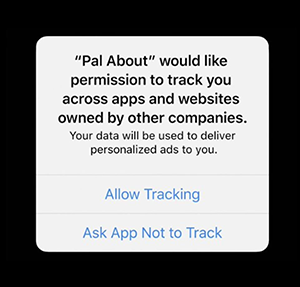The advertising market on iOS is waiting for shocks. Apple's "blow" on IDFA is to blame for everything
The other day Apple announced iOS 14. The new system risks reshaping the entire mobile advertising market. After its release in September, applications downloaded from the App Store will be required to ask the user if he is ready to share information about himself with advertising platforms.
So what happened anyway?
To answer this question, it is important to understand how the purchase of advertising on Apple mobile devices works today.
There is a so-called IDFA on the iOS platform. This is an identifier for advertisers that helps marketers track the effectiveness of UA campaigns. Working with him is structured, according to John Koetsier, author and analyst at Forbes, as follows:
- the app developer launches a campaign to purchase users;
- his advertising partner (mediator) helps him with the help of IDFA to link a click on an advertisement with the final installation on a certain device;
- this helps everyone figure out which of the advertising networks worked;
- it also helps to link an advertising campaign with spending inside the app.;
- moreover, it allows the partner to inform advertising networks that he likes similar to this IDFA.
In the new version of iOS, Apple is essentially crippling IDFA. It obliges all applications that have such an identifier to ask the user whether he wants to share data about himself with third-party applications. Forbes believes that most people will refuse this.

That’s the choice the user will face every time
This will hit the mobile advertising market in the strongest way, since it will no longer be as transparent as before.
Among other things, the long-established strategy of pre-checking the audience before further scaling the campaign will be in question.
Is it really that bad?
Bad, but not really.
Apple has a framework for mobile attribution that “cares about the security of personal data” (Apple explains the introduction of such measures with concern for user privacy). It’s called SKAdNetwork. With its help, you can only find out information about which of the ads worked and how exactly (it also gives conversion, data on repeat downloads, the traffic source application, and so on).

How SKAdNetwork works
At the same time, the framework does not provide any information about which users like the application (goodbye, geo, gender segmentation, cohort selection, etc.), as well as data on which types of devices applications are running on, and so on.
This puts all mediators in absolutely equal conditions. There is no difference, we are talking about Google or Facebook, Adjust or ironSource. They all receive the same information about the effectiveness of the campaign from Apple.
However, in theory, the market leaders — Google and Facebook — can bypass the measure adopted by Apple. Their SDKs are installed in tens of thousands of top applications. When conducting campaigns, they have the opportunity to rely on previously collected data.
But there is a nuance here, Apple may not like it very much.
Is there any news? Share it with us, write to press@app2top.ru
